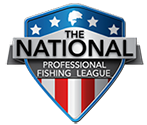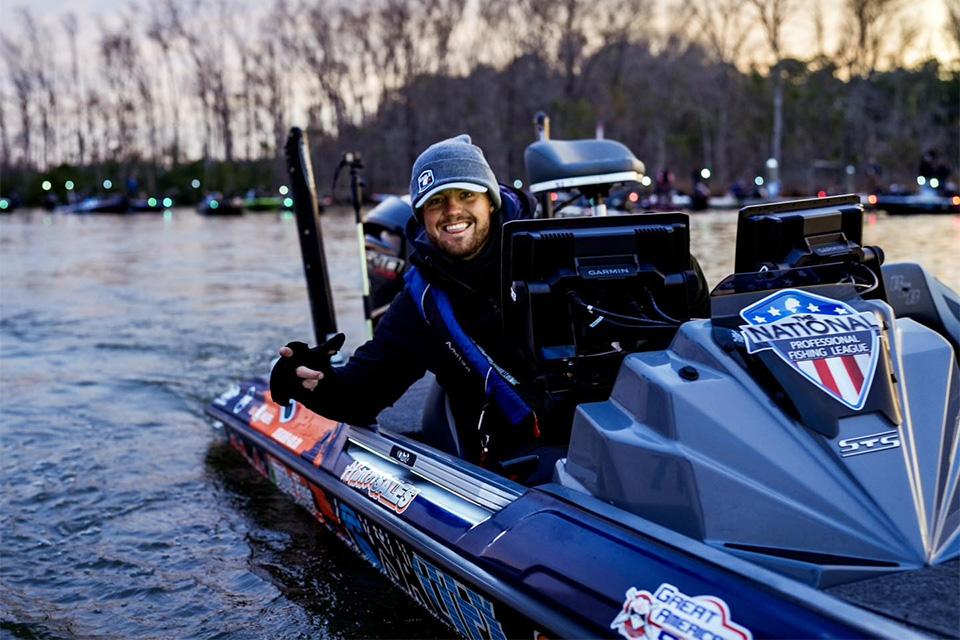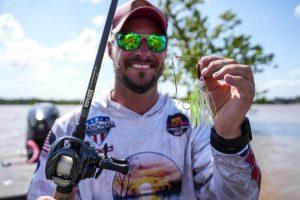Story by Hunter Sales | Photos by Tanner & Travis Lyons
Across the country, lakes are being lowered to winter pool levels. Here in Jefferson County, Tennessee, both Douglas and Cherokee lakes have already dropped nearly 25 feet from summer pool and will continue dropping over the next month. Whether your local lake drops five feet each fall or 40 feet, this impacts fishing in a few unique ways. I’m going to take my experience from fishing the substantial drawdown in East Tennessee to share some tips on how to be successful on the water during this period.
The fall drawdown can leave many anglers scratching their heads as the productive areas from a few weeks before are now “ghost towns” and the fish have relocated to habitat. To make matters worse, the fish seem to be unpredictable in this period. Some fish pull into drains and ditches while others push gizzard shad onto flats. The key to staying with the fish during this transition is centered around where you’re seeing baitfish. The same groups of shad that were living near offshore summertime holes are now migrating towards the backs of creeks. By using your electronics, your eyes, or a combination of the two, it shouldn’t take too much time to locate a population of baitfish.
My preferred approach for this period depends on whether you are able to utilize FFS or not. If you can, the drains and ditches nearest main channel swings often hold big populations of bass feeding on threadfin shad and alewives here in East Tennessee. These fish can be targeted with a jig-head/minnow combination or with a Silver Buddy-type blade bait for fish closer to the bottom. For these fish that are keying on smaller baitfish, my go-to is a 4-inch Z-Man Scented Jerk Shadz with a 1/4-ounce ball head.
If I can’t utilize FFS or am simply targeting kicker fish, the fish that are eating gizzard shad on flat banks become my priority. These flat banks are often overlooked by other anglers but often attract gizzard shad and therefore bigger than average bass. I find the sweet spots on these flats by either idling or keeping the trolling motor on high speeds while keeping an eye out for gizzard shad waking across the surface or popping occasionally. Typically, even a little activity is enough to signify a population using an area. These fish are best targeted by sitting a full cast away from the shore and making long casts up onto the flat.
My favorite areas are where the boat is less than three feet deep and I’m a full cast from the bank. I show some of these areas in detail here. Bait selection can be kept simple. I usually opt for a walking bait and a 3/8-ounce Z-Man Jackhammer. It is important to work the bait all the way back to the boat until you find the depth zone that is most productive.
The only other approach that needs to be talked about is running isolated structure. As water falls and the amount of cover in the water decreases, the stuff that is remaining becomes “high percentage.” I’m a big fan of running isolated docks, laydowns, or other hard cover. Typically, if you can find enough of these pieces of cover to run for a full day, you can piece together a really good tournament bag. It’s not a lot of fun because you’re typically only making a few casts before needing to change spots, but isolated cover can hold some of the biggest fish in the lake. A jig or buzzbait often gets the call for me in these scenarios.
These three approaches are the best way to simplify fishing the fall drawdown. I’ve had some of my best days on the water during the fall as the fish congregate. Keep an eye on the baitfish, simplify your lure selection, keep moving until you start getting bites, and you’ll be able to have some great days on the water while your buddies are all in the deer woods.
Catch you next week!





